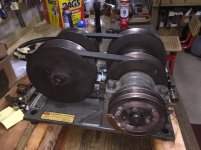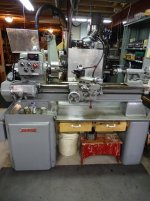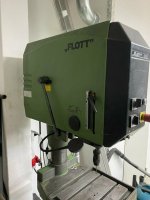Hi,
I've been thinking about a design consideration for milling machines and lathes, specifically ways to change speeds. In CNC machines these days there is often only an electrical control of the spindle speed, but in many manual machines a gearbox or another mechanical transmission is used. I know that in many high end machines (Schaublin, Weiler, Aciera, Fehlmann, Hardinge and I think some other American toolroom lathes) a stepless belt drive was used.
Now, I'm no machine designer, so I'm clearly missing something, but when I think about it, the stepless drive has a lot of advantages with little downsides: it seems mechanically much simpler, it allows for a better speed control, it's usually quieter (or at least that's my experience). The only downsides that I can see are: lower range and efficiency, but the former can be countered by electrical gears on a motor and I don't think the latter is a big issue. For heavy machining I guess a belt maybe could slip easier? And then some manual lathes have a speed preselector, but that's rather rare.
Is there something I'm missing? Are there any other reasons why most of the Chinese milling machines for example have gearboxes? It seems to me that machining and hardening all those shafts and gears is harder than creating a set of pulleys?
I've been thinking about a design consideration for milling machines and lathes, specifically ways to change speeds. In CNC machines these days there is often only an electrical control of the spindle speed, but in many manual machines a gearbox or another mechanical transmission is used. I know that in many high end machines (Schaublin, Weiler, Aciera, Fehlmann, Hardinge and I think some other American toolroom lathes) a stepless belt drive was used.
Now, I'm no machine designer, so I'm clearly missing something, but when I think about it, the stepless drive has a lot of advantages with little downsides: it seems mechanically much simpler, it allows for a better speed control, it's usually quieter (or at least that's my experience). The only downsides that I can see are: lower range and efficiency, but the former can be countered by electrical gears on a motor and I don't think the latter is a big issue. For heavy machining I guess a belt maybe could slip easier? And then some manual lathes have a speed preselector, but that's rather rare.
Is there something I'm missing? Are there any other reasons why most of the Chinese milling machines for example have gearboxes? It seems to me that machining and hardening all those shafts and gears is harder than creating a set of pulleys?







